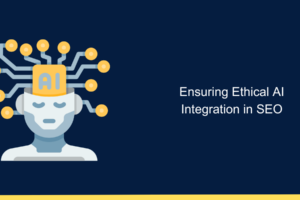
SEO: Mastering the Art and Science of Search Engine Optimization
Search Engine Optimization (SEO) has become an essential strategy for businesses and content creators seeking to enhance their online presence. With the majority of online experiences starting with a search engine, optimizing content to rank higher on search engine results pages (SERPs) is crucial for visibility and success. This article delves into the core aspects of SEO, its importance, and effective strategies to boost your digital footprint.
Understanding SEO
SEO involves a combination of on-page and off-page techniques designed to improve a website’s ranking on search engines like Google, Bing, and Yahoo. The goal is to attract organic traffic by making a site more relevant and authoritative for specific search queries. SEO is not a one-time effort but a continuous process of tweaking and refining based on performance metrics and evolving algorithms.
The Importance of SEO
- Increased Visibility and Traffic: Higher rankings on SERPs lead to more clicks and visits. Research shows that the top result on Google gets about 31.7% of all clicks, while results on the second page receive less than 1% of traffic.
- Credibility and Trust: Users tend to trust websites that appear on the first page of search results. A high ranking signals to users that the site is a credible source of information.
- Better User Experience: SEO involves optimizing website structure and content, which enhances usability. A well-organized site with relevant content leads to a better user experience, encouraging longer visits and lower bounce rates.
- Cost-Effective Marketing: Unlike paid advertising, organic traffic from SEO does not incur ongoing costs. While it requires an investment of time and resources, the long-term benefits of sustained traffic make it a cost-effective strategy.
Key Elements of SEO
SEO is multifaceted, involving several key elements:
- Keyword Research: Identifying the right keywords is the foundation of effective SEO. Tools like Google Keyword Planner, SEMrush, and Ahrefs help find terms that potential customers are searching for. Long-tail keywords, though less competitive, often lead to higher conversion rates.
- On-Page SEO: This involves optimizing individual pages to rank higher. Key factors include:
- Title Tags and Meta Descriptions: These elements should be compelling and include relevant keywords.
- Header Tags (H1, H2, H3): Organizing content with headers makes it easier for search engines to understand and improves readability.
- Content Quality: Content should be informative, engaging, and tailored to the audience’s needs, incorporating keywords naturally.
- URL Structure: URLs should be clean and include keywords to indicate the page’s topic.
- Technical SEO: This ensures that a website meets the technical requirements of search engines. Important aspects include:
- Site Speed: Fast-loading pages are critical for user experience and SEO.
- Mobile-Friendliness: With a growing number of users accessing the web via mobile devices, a responsive design is essential.
- XML Sitemaps and Robots.txt: These help search engines crawl and index a site efficiently.
- Off-Page SEO: Building a website’s authority through external means, primarily:
- Backlinks: Acquiring high-quality backlinks from reputable sites signals authority and trust to search engines.
- Social Media Engagement: While not a direct ranking factor, a strong social media presence can drive traffic and engagement, indirectly benefiting SEO.
- Local SEO: For businesses with a physical presence, local SEO is vital. Optimizing for local search involves:
- Google My Business: Claiming and optimizing your Google My Business listing.
- NAP Consistency: Ensuring your business’s Name, Address, and Phone number are consistent across all platforms.
Keeping Up with SEO Trends
SEO is a dynamic field, characterized by constant evolution as search engines refine their algorithms to deliver the most relevant and high-quality results to users. To maintain a competitive edge, it’s essential to stay updated with the latest SEO trends and algorithm changes. Here are three critical trends currently shaping the SEO landscape:
Voice Search Optimization

With the proliferation of smart speakers and voice assistants such as Amazon’s Alexa, Google Assistant, and Apple’s Siri, voice search has become a significant aspect of SEO. Voice search queries tend to be longer and more conversational than text searches, often framed as questions.
Key Strategies for Voice Search Optimization:
- Conversational Keywords: Incorporate long-tail keywords and natural language phrases into your content. Think about how people speak rather than how they type.
- Featured Snippets: Aim to have your content appear in featured snippets, as these are often used in voice search results. Structured data and clear, concise answers to common questions can help achieve this.
- Local SEO: Many voice searches are local, such as “find a nearby coffee shop.” Ensure your local SEO is robust, with accurate business listings and relevant local keywords.
- FAQ Pages: Create FAQ pages that answer common questions related to your industry. This format aligns well with the query style of voice searches.
AI and Machine Learning

Artificial Intelligence (AI) and machine learning are transforming how search engines interpret queries and rank content. Google’s RankBrain, an AI algorithm, helps process and understand search queries to deliver more relevant results.
Key Strategies for AI and Machine Learning:
- User Intent: Focus on understanding and satisfying user intent. Create content that answers questions, solves problems, and provides value.
- Content Relevance: Ensure your content is highly relevant to the user’s search query. Use semantic SEO techniques to cover related topics and keywords comprehensively.
- Engagement Metrics: Search engines use metrics like click-through rate (CTR), dwell time, and bounce rate to gauge content quality. Create engaging, well-structured content that keeps users on your site longer.
Core Web Vitals
Google’s Core Web Vitals are a set of specific factors considered important in a webpage’s overall user experience. These metrics are part of Google’s Page Experience update, which evaluates the quality of a user’s experience on a web page.
Key Strategies for Core Web Vitals:
- Loading Performance (Largest Contentful Paint – LCP): Ensure that the main content of a page loads quickly. Aim for an LCP of 2.5 seconds or less. Optimize images, use fast hosting, and leverage browser caching.
- Interactivity (First Input Delay – FID): Measure the time from when a user first interacts with a page to the time when the browser responds. Aim for an FID of less than 100 milliseconds. Minimize JavaScript execution and optimize your code.
- Visual Stability (Cumulative Layout Shift – CLS): Ensure that pages have a stable layout, with an aim for a CLS score of less than 0.1. Avoid unexpected layout shifts by specifying size attributes for images and videos and reserving space for ads.
By focusing on these emerging trends, businesses and content creators can align their SEO strategies with the latest advancements in search technology. Staying informed and adaptable is key to maintaining and improving your search engine rankings in an ever-evolving digital landscape.
Conclusion
Mastering SEO requires a blend of technical knowledge, strategic thinking, and continuous learning. By focusing on the key elements of SEO and staying abreast of industry trends, businesses and content creators can significantly enhance their online visibility, drive more organic traffic, and ultimately achieve greater success in the digital landscape.





